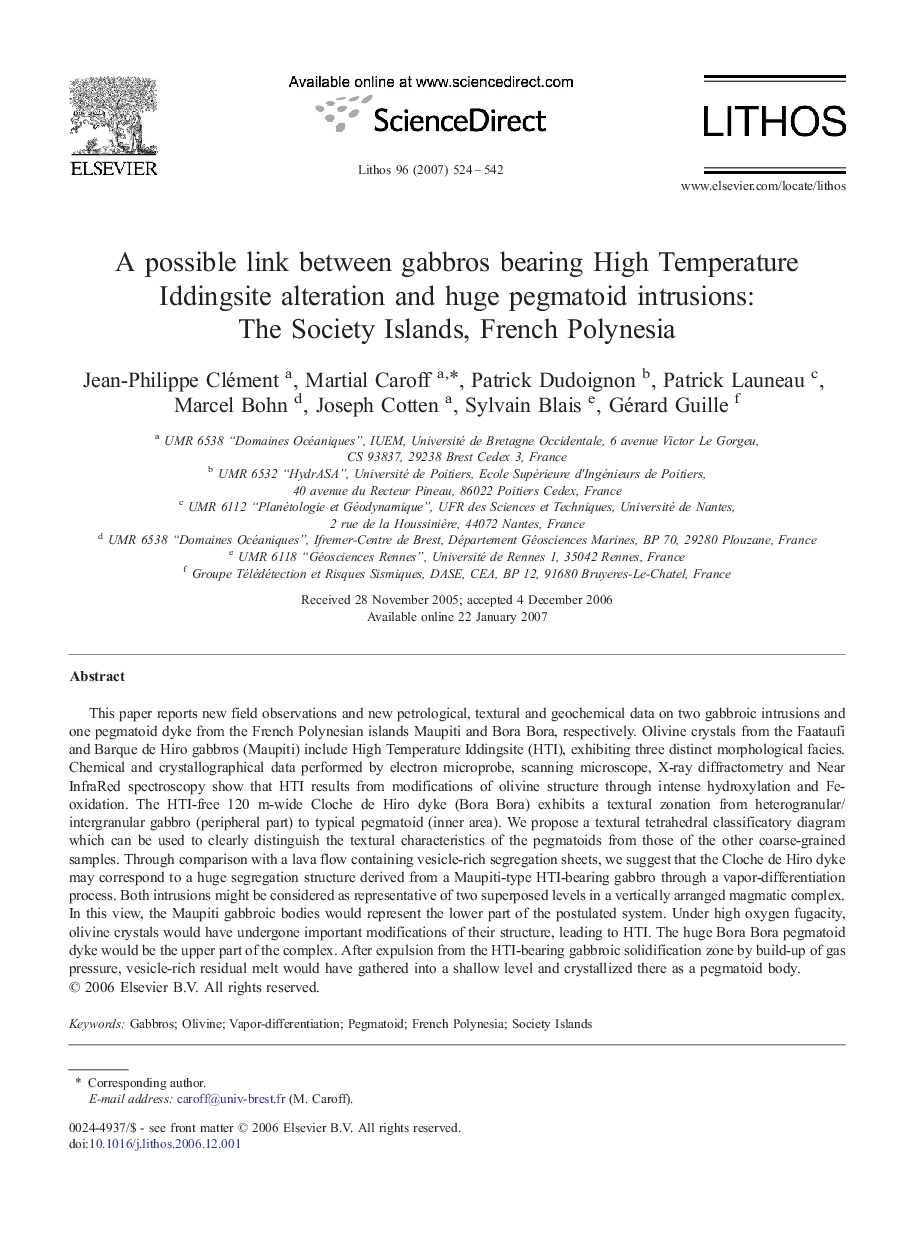| کد مقاله | کد نشریه | سال انتشار | مقاله انگلیسی | نسخه تمام متن |
|---|---|---|---|---|
| 4717836 | 1638767 | 2007 | 19 صفحه PDF | دانلود رایگان |
عنوان انگلیسی مقاله ISI
A possible link between gabbros bearing High Temperature Iddingsite alteration and huge pegmatoid intrusions: The Society Islands, French Polynesia
دانلود مقاله + سفارش ترجمه
دانلود مقاله ISI انگلیسی
رایگان برای ایرانیان
موضوعات مرتبط
مهندسی و علوم پایه
علوم زمین و سیارات
ژئوشیمی و پترولوژی
پیش نمایش صفحه اول مقاله

چکیده انگلیسی
This paper reports new field observations and new petrological, textural and geochemical data on two gabbroic intrusions and one pegmatoid dyke from the French Polynesian islands Maupiti and Bora Bora, respectively. Olivine crystals from the Faataufi and Barque de Hiro gabbros (Maupiti) include High Temperature Iddingsite (HTI), exhibiting three distinct morphological facies. Chemical and crystallographical data performed by electron microprobe, scanning microscope, X-ray diffractometry and Near InfraRed spectroscopy show that HTI results from modifications of olivine structure through intense hydroxylation and Fe-oxidation. The HTI-free 120Â m-wide Cloche de Hiro dyke (Bora Bora) exhibits a textural zonation from heterogranular/intergranular gabbro (peripheral part) to typical pegmatoid (inner area). We propose a textural tetrahedral classificatory diagram which can be used to clearly distinguish the textural characteristics of the pegmatoids from those of the other coarse-grained samples. Through comparison with a lava flow containing vesicle-rich segregation sheets, we suggest that the Cloche de Hiro dyke may correspond to a huge segregation structure derived from a Maupiti-type HTI-bearing gabbro through a vapor-differentiation process. Both intrusions might be considered as representative of two superposed levels in a vertically arranged magmatic complex. In this view, the Maupiti gabbroic bodies would represent the lower part of the postulated system. Under high oxygen fugacity, olivine crystals would have undergone important modifications of their structure, leading to HTI. The huge Bora Bora pegmatoid dyke would be the upper part of the complex. After expulsion from the HTI-bearing gabbroic solidification zone by build-up of gas pressure, vesicle-rich residual melt would have gathered into a shallow level and crystallized there as a pegmatoid body.
ناشر
Database: Elsevier - ScienceDirect (ساینس دایرکت)
Journal: Lithos - Volume 96, Issues 3â4, July 2007, Pages 524-542
Journal: Lithos - Volume 96, Issues 3â4, July 2007, Pages 524-542
نویسندگان
Jean-Philippe Clément, Martial Caroff, Patrick Dudoignon, Patrick Launeau, Marcel Bohn, Joseph Cotten, Sylvain Blais, Gérard Guille,